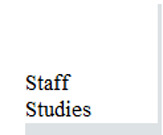
Staff Studies
 |
171
The Cost of Bank Regulation: A Review of the Evidence Gregory Elliehausen April 1998 |
Summary: The cost of government regulation has become a political issue in recent years, and the cost is no less controversial for banks than for other types of businesses. The controversy has prompted several studies of regulatory costs in banking. This paper evaluates the evidence from those studies, which vary widely in quality and content, and suggests what can reasonably be concluded about the effects of regulation on banks' costs. It begins with a discussion of the sources and types of regulatory costs. It then discusses the requirements of the various methods of determining costs and evaluates published empirical studies in light of those requirements. The paper ends with a review of the studies' substantive findings.
Regulation appears to account for a small but not inconsiderable share of banks' costs. The best available evidence, most of which is not very precise, suggests that the total cost of all bank regulations in 1991 (the year for which most of the studies were conducted) may have been about 12 percent to 13 percent of banks' noninterest expenses. Incremental costs--the costs of those required activities that are undertaken only because they are required--may have been about half of the total cost.
Labor costs apparently are the major component of both the start-up costs and the ongoing costs of complying with regulations. Some studies suggest that the time spent by bank officers and managers on compliance activities, especially activities related to new regulations or to major revisions of existing regulations, account for a large portion of labor costs.
Statistical analyses have detected, for several regulations, scale economies in compliance costs. This finding suggests that smaller banks, relative to larger banks, have a cost disadvantage that may discourage the entry of new firms into banking, may stimulate consolidation of the industry into larger banks, and may inhibit competition among institutions in markets for specific financial products. It also suggests the possibility that regulation in the early stages of the product life cycle--when output is low and average regulatory cost would be high--will discourage the introduction of new financial services.
One survey found that the start-up costs of complying with a new regulation were insensitive to the number of changes required to bring a bank's practices and policies into compliance with the regulation. If this finding is generally true, then applying regulations generally to address the practices of a few institutions would impose costs on all institutions, not just on the few that must change their practices. This finding also suggests that a regulatory policy of making frequent minor revisions to regulations might be more costly to banks than one of making infrequent major revisions.
The paper concludes that surveys can produce reasonably good data on regulatory costs if good survey methods are followed. Carefully designed studies can increase knowledge of the effects of regulation on banks' costs. However, exercises that measure only costs and do not attempt to explain the determinants of cost are likely to have limited value. Our current understanding of the determinants of regulatory costs is based on analysis of a small number of regulations by a few researchers. Further research covering more and different types of regulations and regulatory requirements is clearly needed.
Full paper (145 KB PDF)
Home | Economic research and data | Staff Studies
Accessibility
To comment on this site, please fill out our feedback form.
Last update: May 29, 2002